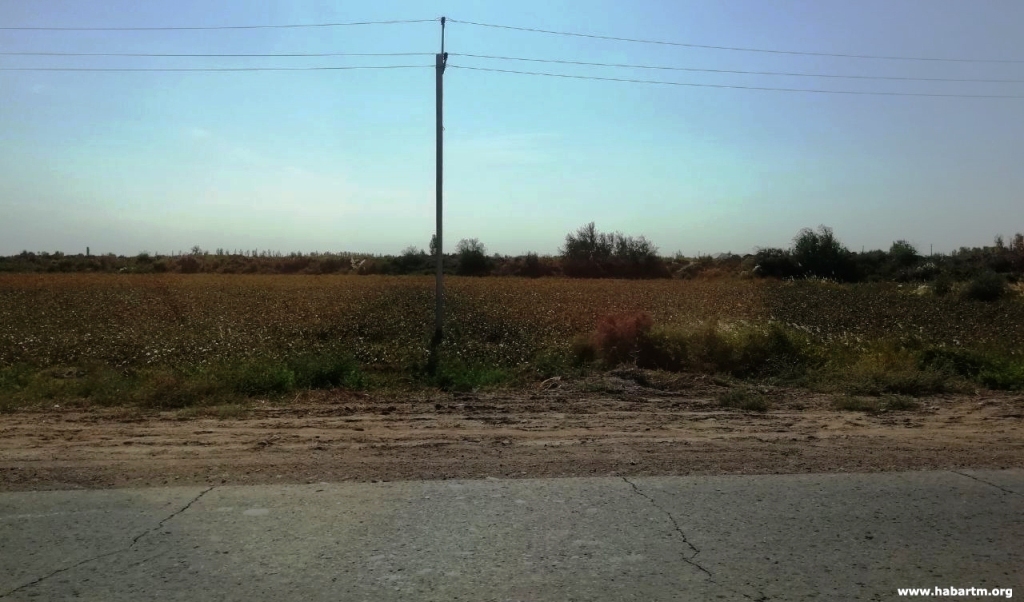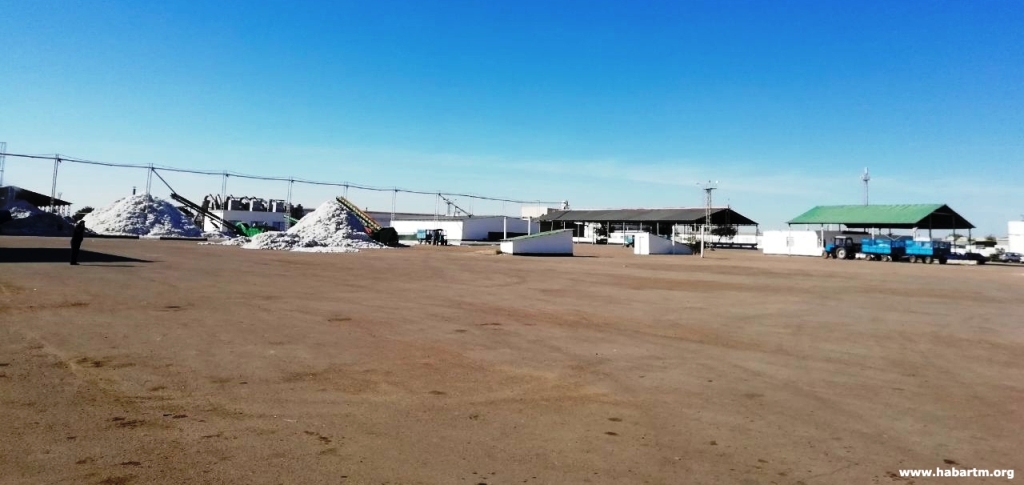 In Turkmenistan, it is half-way through the cotton harvesting season. Despite the crop failure and empty cotton fields, local government officials hold daily meetings with chiefs of institutions and demand more people in the fields and more cotton to meet the state plan.
In Turkmenistan, it is half-way through the cotton harvesting season. Despite the crop failure and empty cotton fields, local government officials hold daily meetings with chiefs of institutions and demand more people in the fields and more cotton to meet the state plan.
Official statistics show that both the allocated area and the plan for production of raw cotton remained unchanged from the previous years in Turkmenistan. Authorities have planned to harvest one million and 50,000 tons of cotton over 545,000 hectares of arable land. If little has changed on paper, the conditions of the harvest have undoubtedly become harsher compared to previous seasons.
Alternative Turkmenistan News (ATN) prepared a report on the current situation in the cotton fields around the country, including new cases of mass mobilization of state employees for the cotton campaign. A network of civic activists and local residents provided data and observations after monitoring the use of forced labor throughout the cotton harvest chain.
“Keep looking, there must be cotton in this field”
Before the start of this year’s campaign, agronomists warned that the harvest would yield less cotton in 2018 than in previous seasons. Experts around the four cotton producing regions reached the same stark conclusion. Agronomists from the farmers’ associations and workers at the agricultural departments of the district administrations confirmed the bad state of the fields pointing to the shortage of irrigation water and the destructive effect of last May’s salt storms on the crops.
“Cotton plants have become frail; they don’t grow as tall and densely as in previous years”, an agronomist from Sayat district said. “Lack of water, together with the wind storms that brought tons of corrosive salt to the fields, weakened the crop. In addition, the government agencies dedicated to agriculture gave inconsistent orders, failed to monitor the violations of cultivation rules and sent insufficient mineral fertilizers. Some fields are just barren, empty. You can spot only a few bushes here and there.”
The situation in Dashoguz is even worse. According to a worker at Ak Altyn cotton-trading company, if the region yields half of the planned harvest volume it would be a fortunate turn of events. The central government expects Dashoguz to yield 230 thousand tons of cotton.
“In August, before the campaign, we conducted a check on the crops together with representatives of the local administration and Turkmenpagta, the state-owned company in charge of the cotton industry,” the Ak Altyn worker said. Our analysis sought to determine the volume of cotton we should have expected from the fields. We saw entire plots of land in Akdepe, Koneurgench, Yylanly and Saparmurat Turkmenbashi districts that had never been watered throughout the summer. Bushes were short, yielding only one or two thin bolls of cotton. How could the plan be possibly fulfilled?”
Despite these adverse conditions, local governors and their deputies have tightened their requirements for the harvest, asking the directors of state institutions “to take part in matters of national importance and send the highest number of their employees to the cotton fields.” At daily meetings regarding the harvest, local administrators were constantly reminded that the harvest is part of the state worker’s “civic and patriotic duty.”
A deputy director of one of the state organizations in Dashoguz described how these meetings were conducted. In the absence of his boss, he participated in a cotton meeting at the Dashoguz regional administration.
“Every head of a state organization comes to the meeting with a notebook and reports personally to the governor or his deputy. They report the number of people that were sent to the cotton harvest the previous day and submit reports about how many kilograms of cotton were collected. These reports are stamped and signed by the officials at farmers’ associations. Should the actual number of workers sent to the field be smaller than the planned number, the director would be reproached harshly. The reprimand would be prolonged, until the director promises to rectify his mistakes from the following day.”
The deputy director said that the quota requirements were strict and the administration would not accept excuses. The attendees of the meetings would never dare to reveal that, in fact, harvesters have to “literally run around looking for a handful of bolls.”
A source who participated in one of these meetings recounted the experience of a newly-appointed official in Akdepe district. As he tried to explain the reasons for the low yield from the previous day, the deputy regional governor interrupted him and shouted: “Keep looking, there must be cotton in this field!”
To be continued…








